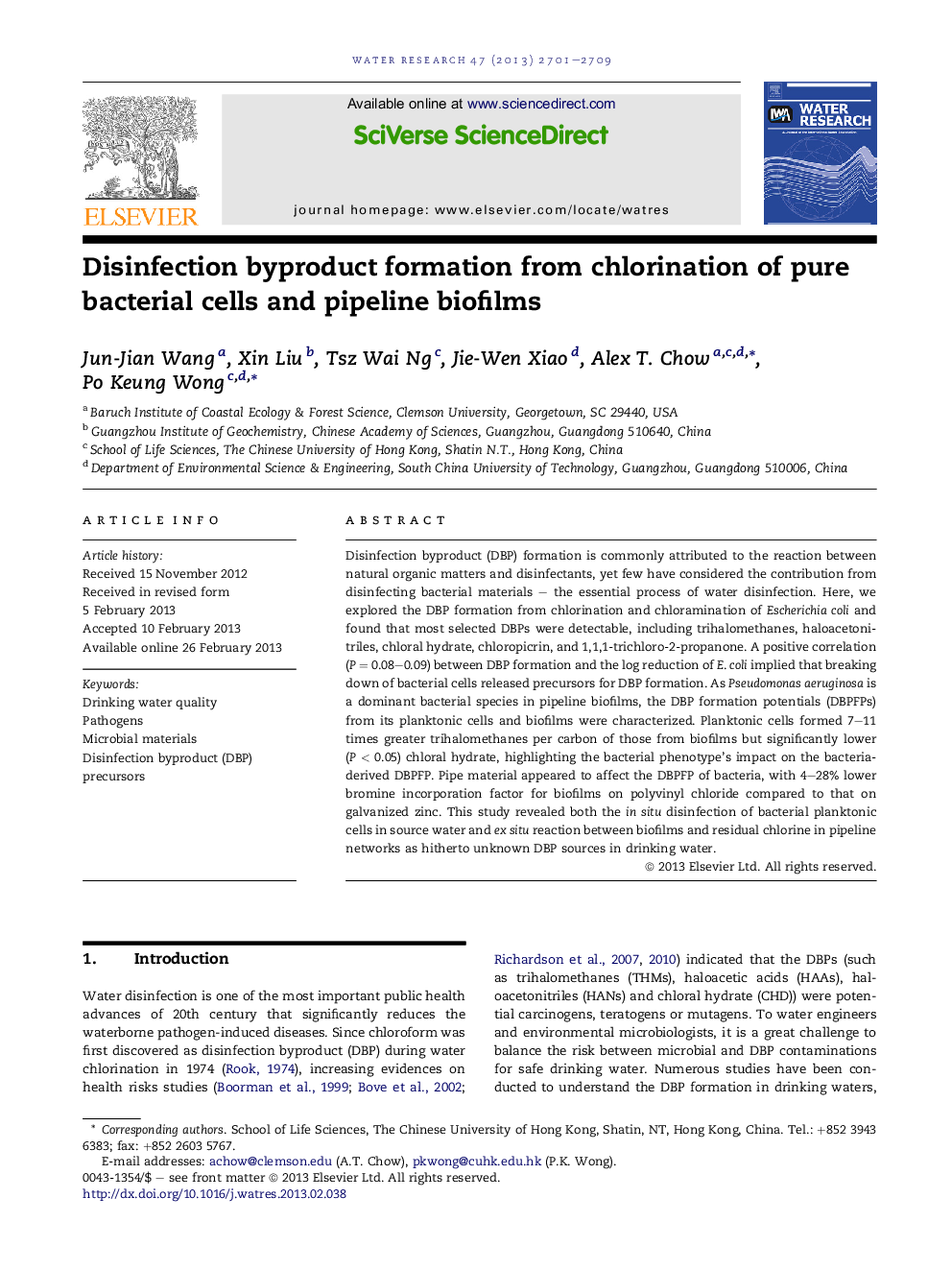| کد مقاله | کد نشریه | سال انتشار | مقاله انگلیسی | نسخه تمام متن |
|---|---|---|---|---|
| 4482238 | 1316852 | 2013 | 9 صفحه PDF | دانلود رایگان |

Disinfection byproduct (DBP) formation is commonly attributed to the reaction between natural organic matters and disinfectants, yet few have considered the contribution from disinfecting bacterial materials – the essential process of water disinfection. Here, we explored the DBP formation from chlorination and chloramination of Escherichia coli and found that most selected DBPs were detectable, including trihalomethanes, haloacetonitriles, chloral hydrate, chloropicrin, and 1,1,1-trichloro-2-propanone. A positive correlation (P = 0.08–0.09) between DBP formation and the log reduction of E. coli implied that breaking down of bacterial cells released precursors for DBP formation. As Pseudomonas aeruginosa is a dominant bacterial species in pipeline biofilms, the DBP formation potentials (DBPFPs) from its planktonic cells and biofilms were characterized. Planktonic cells formed 7–11 times greater trihalomethanes per carbon of those from biofilms but significantly lower (P < 0.05) chloral hydrate, highlighting the bacterial phenotype's impact on the bacteria-derived DBPFP. Pipe material appeared to affect the DBPFP of bacteria, with 4–28% lower bromine incorporation factor for biofilms on polyvinyl chloride compared to that on galvanized zinc. This study revealed both the in situ disinfection of bacterial planktonic cells in source water and ex situ reaction between biofilms and residual chlorine in pipeline networks as hitherto unknown DBP sources in drinking water.
Figure optionsDownload high-quality image (84 K)Download as PowerPoint slideHighlights
► Disinfection byproducts (DBPs) can be derived from bacterial source.
► DBPs from bacteria have more haloacetonitrile than from humic substances.
► The phenotype largely influences the yield and speciation of DBPs.
► The pipe materials influence the speciation of DBPs from biofilms.
► Bacteria contribute to DBP budget by both in situ and ex situ formation.
Journal: Water Research - Volume 47, Issue 8, 15 May 2013, Pages 2701–2709